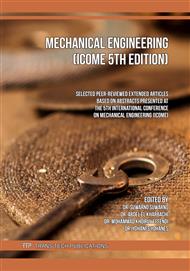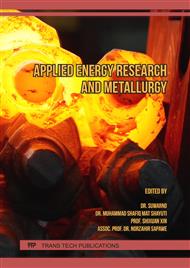p.11
p.19
p.25
p.31
p.39
p.49
p.57
p.65
p.75
Straightness Geometric Error Assessment for CNC Milling Machine
Abstract:
The straightness movement error of the machine tools axis contributes significantly to the straightness of the workpiece machining feature. This paper focuses on the assessment study of CNC machine tools’ straightness geometric error for obtaining recommendation information to improve machine geometric accuracy. A research method by determining measurement parameters according to ISO 230 procedure, no-load measurement of straightness vertical-horizontal geometric error using a laser interferometer, collecting data, data analysis. Data analysis calculates positional straightness deviation, mean positional deviation, systematic positional deviation, repeatability, and accuracy of straightness movement for each machine axis, and generating error compensation values for improving machine geometric error. The travelled distance of the X, Y, and Z-axis CNC milling machine tested is about 1100 mm, 560 mm, and 520 mm. The assessment result shows mean deviation straightness horizontal of X, Y, and Z-axis is 4.14 μm, 3.41μm, and 0.95 μm. The mean deviation straightness vertical of X, Y, and Z-axis is 3.75 μm, 2.63 μm, and 2.30 μm. Finally, the assessment outcome is generating error compensation values of each axis. It could be recommendation information for setting back error compensation parameter on CNC controller, hence the mean deviation of straightness geometric error machine tools to be less than 1 μm.
Info:
Periodical:
Pages:
39-46
Citation:
Online since:
January 2023
Price:
Сopyright:
© 2023 Trans Tech Publications Ltd. All Rights Reserved
Share:
Citation:



